The Crazy Costs Of Hollywood Divorce
Divorce is never pleasant. It’s filled with heartbreak, with a sense of personal defeat. It’s seldom a step that’s taken lightly—almost always a last resort, a way out when all else has failed. When it comes, the cost is heavy—in loss of personal pride, in emotional exhaustion, and often in dollars and cents. But if the need is urgent, these penalties must be faced.
The trouble with such penalties is that they’re not paid off and then forgotten like monthly bills. The pinch is felt for a long time—and the over-all effect is sometimes crippling.
Can John Wayne, for instance, afford to marry again? Can Susan Hayward afford to divorce? Will Rita Hayworth continue to pay Dick Haymes’ alimony? And what was it really that murdered the romance of Jane Powell and Gene Nelson? You’ll find the answers in the Ledger of love and among a trail of broken hearts in Hollywood, and you’ll see that, for movie stars in particular, the cost of leaving is terribly high.
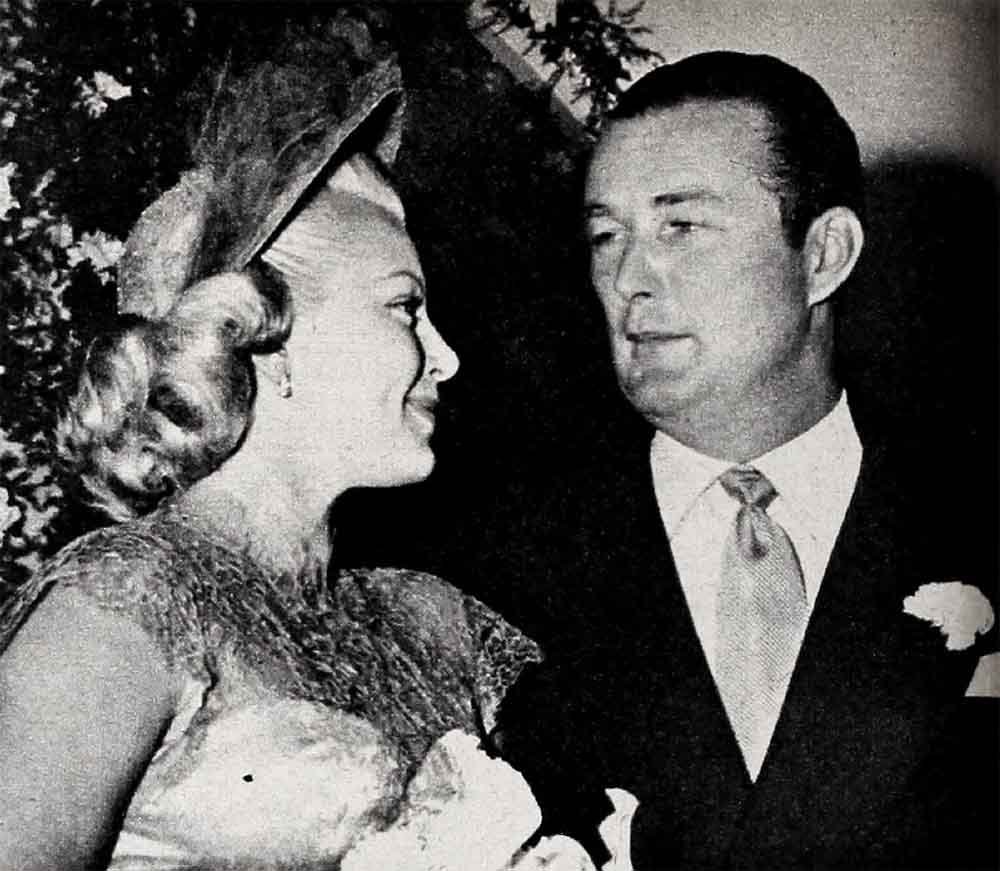
John Wayne has to clear $150,000 a year before he can draw so much as a breath for himself. His first wife, the former Josephine Saenz, gets ten per cent off the top of the cream from everything Duke makes. And he makes a million dollars a year—before taxes, that is. John’s other wife, the lady you know as Chata, is receiving $50,000 a year from the ex-mate she loathes, for the next ten years. And is Mr. Wayne complaining? No siree. He’s a man who just loves to be married and to heck with the price. He has a pretty Peruvian dish all picked out now—Pilar Palette—and his pals will bet you three to one, that Pilar will be Mrs. John Wayne, the Third, one minute after his divorce from wife Number Two becomes final.
The high cost of leaving was far more than a matter of dollars and cents in the Wayne case. There was the dirty linen that was publicly aired. When it was all over John said that what hurt the most was that his four children had read the gory details. And how do you explain these things to your kids?
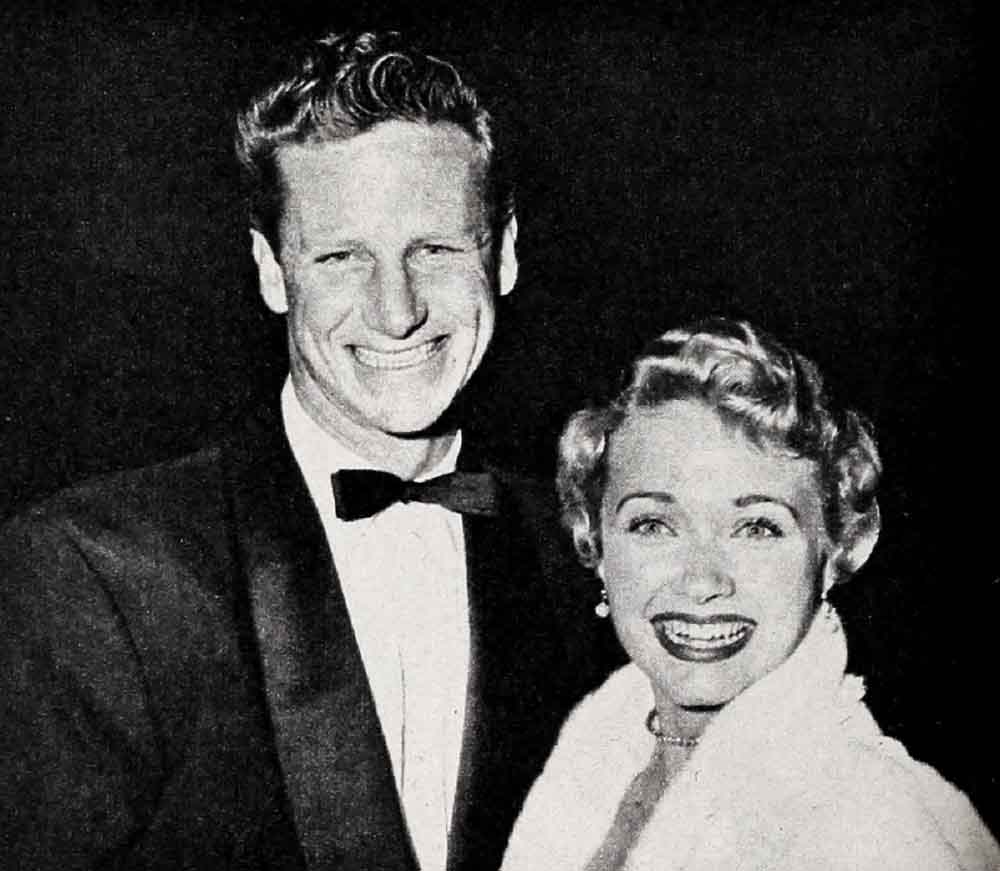
For Susan Hayward, too, the high cost of leaving Jess Barker is more than the bitter fight over the money she made and saved while Jess minded the twins. The toughest problem to face is the physical sharing of the boys, who are much closer to their father than to Susan, because he was with them more. The fierce fight over the community property, valued at between four and five hundred thousand dollars, is a battle over something tangible. You can call in a lawyer for that sort of tug-of-war. You can scream, “This is mine. I earned it, with my very own blood, sweat and tears.” But there’s no yardstick for measuring the love of your children. Or for the loneliness and bankruptcy of affection you can’t help feeling when they spend time with the parent who no longer shares your heart and home. I know Jess wanted a reconciliation. And, despite the fury of their final blow-off, it might be less costly in many ways for Susan to forgive and forget.
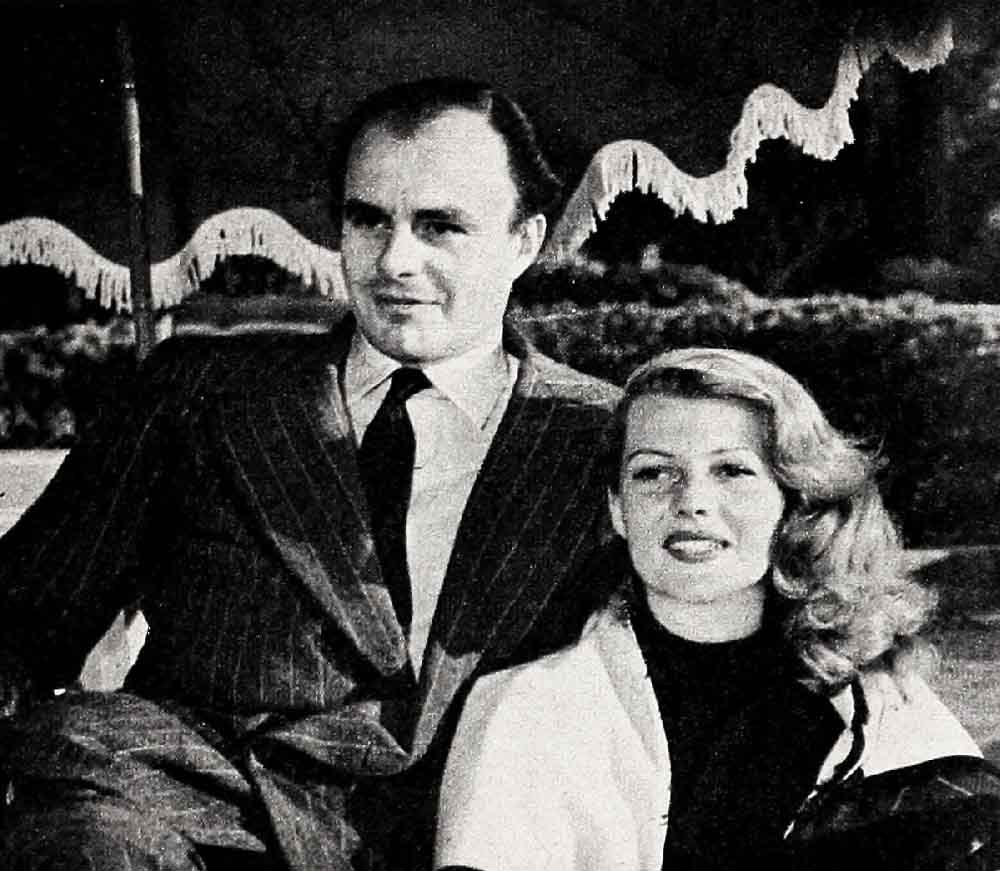
There are three Hollywood lovelies whom I’ve always thought of as “The Tragic Trio”—Rita Hayworth, Lana Turner and Ava Gardner. No matter what their romantic status may be at the moment, there always seems to be an overtone of sadness about them. These girls lead with their hearts, and leave without their bank accounts.
That truism, “It’s the woman who pays,” seems to have been invented for Rita. She has paid through the nose for every marriage. Even when she marched to the altar with the son of the richest man in the world, Prince Aly Khan, it cost Rita money, to say nothing of humiliation. When Cinderella came back from the glory that was Aly, and the grandeur that spelt “Princess,” she was flat broke and had to borrow from her agents. And while a Nevada court promised her a million dollars, she hasn’t yet collected a dime—for herself, or for her daughter by Aly, Princess Yasmin.
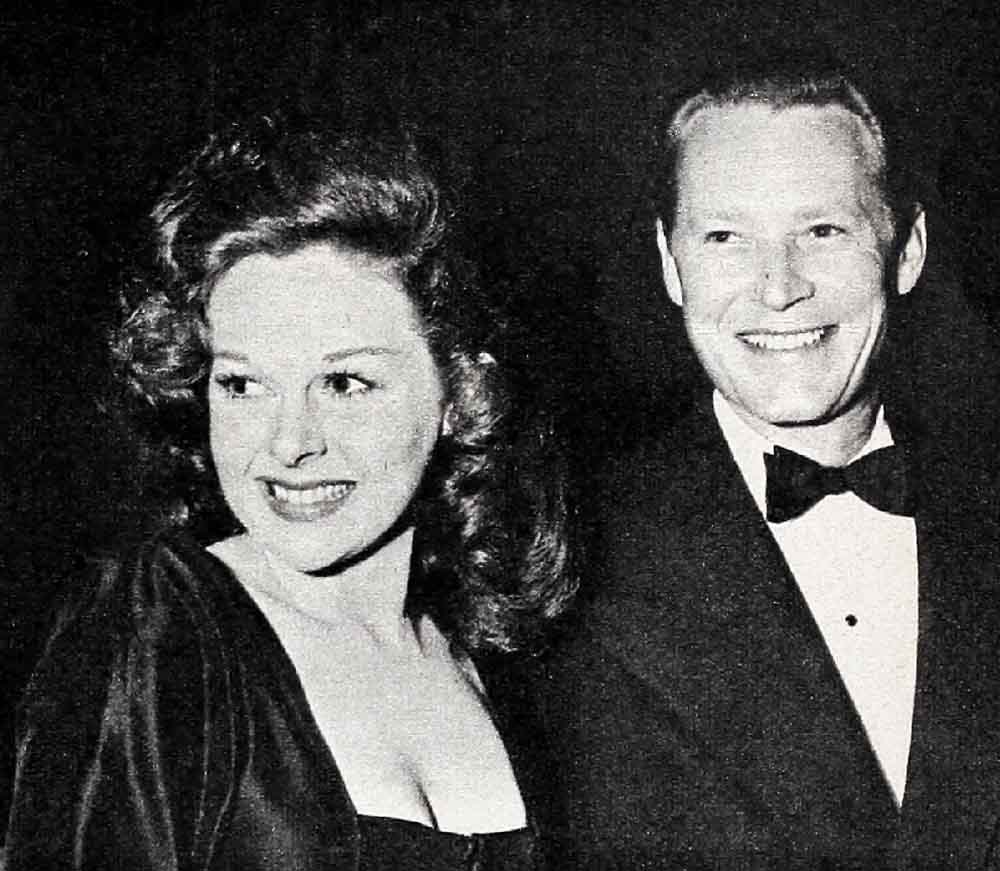
And you don’t have to be Sherlock Holmes to deduce where Dick Haymes found the $8,000 cash for his quick divorce from Nora Eddington Flynn Haymes. Or to figure who pays Nora the $100 a week she demanded before she would sign the precious paper that paved the way for the marriage of Rita and Dick at the Sands Hotel in Las Vegas.
Poor Rita—in more ways than heartbreak! She got nothing when she divorced Orson Welles, except a feeling of relief. And when she shed her first husband, Ed Judson, I believe she had to fork over something like $10,000. He was her manager and he claimed, rightly, that he had changed her from a little dancer into a big star. I wonder, if she’d have been happier as Margarita Cansino. It must be a question Rita asks herself, when, in spite of fame, she looks at her depleted fortune.
Or take Lana Turner. When she left Bob Topping, he left her $90,000 worth of debts. Bob claims they were Lana’s. It doesn’t matter now whose they were. Lana was stuck with them. Bob was supposed to be a millionaire when they married. I’ll never p forget their wedding. Caviar flowed and champagne ran. The fancy hams had “I Love Lana” and “I Love Bob” written in gelatin. This marriage was “Forever.” But it disintegrated like the gelatin. They lived high while it lasted—a penthouse on Park Avenue. A yacht. Came the dawn, the divorce and the accounting.
So Lana marries Lex Barker who has a lot of charm, but no money. And who cares—so long as they’re in love and stay married—contentedly.
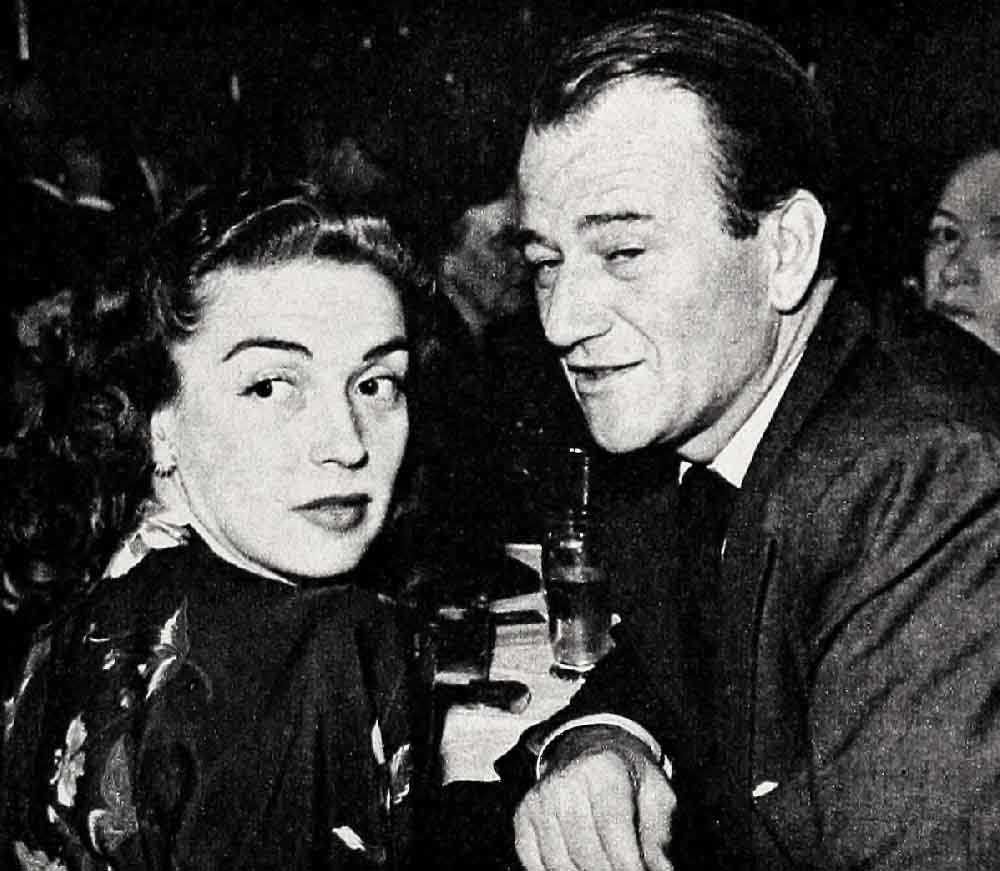
Though Ava Gardner’s divorces have cost her a great deal—sometimes in money, sometimes in tears—for her, they had to happen. She emerged financially solvent from her marriage to Mickey Rooney, but she paid in loneliness and frustration.
Her marriage to Artie Shaw cost her her girlish naivete. She would divorce Frank Sinatra, she said before she left, when she returned from abroad. But after that reunion in Europe, whether or not these two split up finally and completely is anybody’s guess. If they do, this much is sure: The profit and loss sheet of the two-year marriage leaves Ava financially in the red. But she would have one legacy from Frankie-boy—more confidence in herself as a singer, as well as an actress. Frank coached her painstakingly for the songs she has sung in her pictures. And during their marriage, she emerged as a fine comedienne in “Mogambo” with Clark Gable. I don’t know how to tie this in with Frank, except to say the obvious—when you’re loved you can relax in your work. But the big pay-off for Ava, who doesn’t enjoy fame, who can get by without money, is heartbreak and disillusionment.
It cost Jane Powell an apartment house and a huge packet of pride to break up her marriage to Geary Steffen. This “perfect” marriage, it turns out, was the phoniest of them all. Jane was being pathetically deceptive (to herself more than anyone else) when she smiled and smiled in public while she was miserable at home. Here’s another truism: “No one can break up a happy marriage.” And when Jane met Gene Nelson at Warners during the shooting of “Three Sailors and a Girl,” her secret erupted under the warmth of his sympathy.
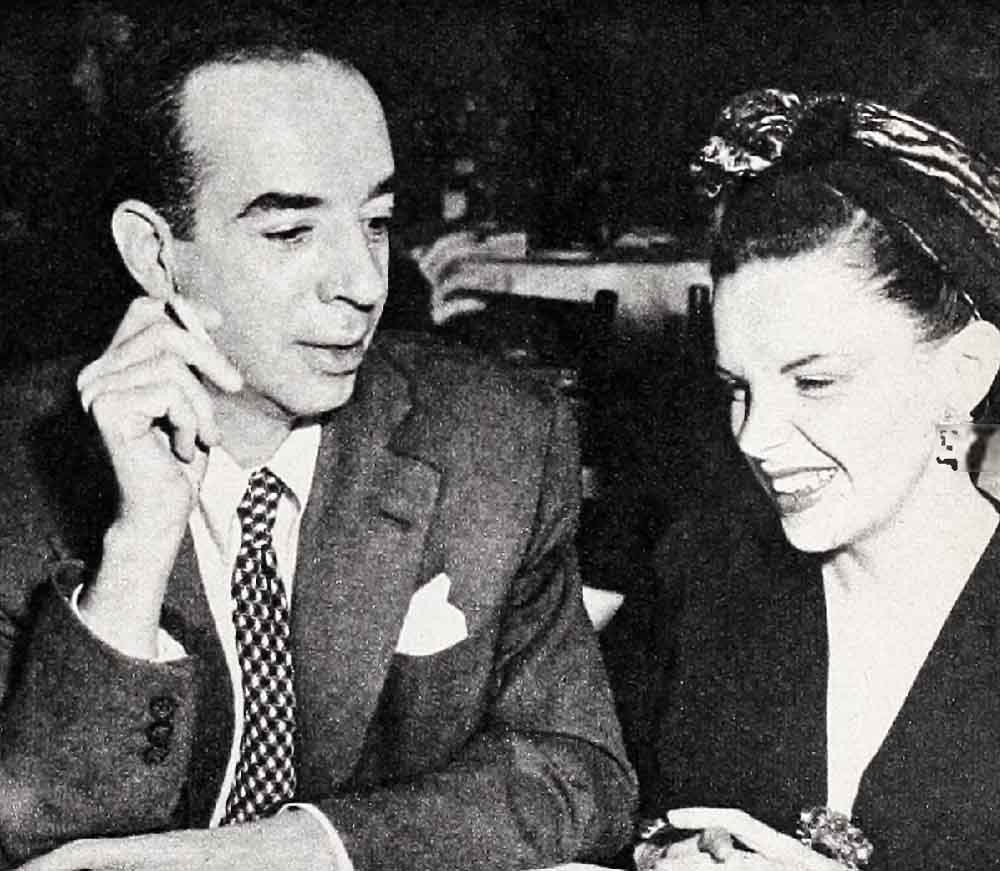
The guy just happened to be Gene. It could have been anyone. If it had been real love that broke up Jane’s marriage, the romance with Gene would have lasted longer. So, when Miriam Nelson held out for a reasonable settlement for herself and their son, and Gene was unable to meet her demands, Janie, who not only suffered financially in her divorce from Geary, but also lost a huge amount of public approbation, decided to cut her losses. She erased Gene from her life. Frankly I was glad. Now, if Jane will give herself a chance to find real, lasting happiness, the high cost of leaving will by no means have been a total loss.
I was glad when Dean Martin kissed and made up with his Jeanne. For one thing, he just couldn’t afford another divorce financially. With two children now and four by his first wife, the handsome half of the Martin and Lewis combo, not only pays for their care and feeding, but gives three thousand dollars a month in alimony to bride Number One. Thirty-six thousand a year! But much more important—his second marriage is too good to be tampered with. The emotional bills for Jeanne and Dean would have been much more serious than the financial, if they had made the mistake of separating.
This reminds me of George Raft who has been paying alimony for twenty-five years to a wife he hasn’t seen since the big crash of his marriage. “I wouldn’t mind paying,” George once told me, “if I got some little return for my money. But this is like throwing thousands of dollars out the window.” I guess it’s the way Virginia Mayo felt when she agreed to pay Michael O’Shea’s first wife some $25,000 as a settlement for back alimony. Mike assured me later, however, that he sold some property of his own to reimburse the doll he loves. And in both cases, the dollars paid for peace of mind.
Judy Garland was broke when she called it a day with Vincente Minnelli. But she was rich in friends—like Louis B. Mayer who paid the high hospital bills after her attempted suicide. And Bing Crosby who brought salvation when he told her, “You can sing on my show anytime—all the time.” That’s how she started on the comeback trail, singing with Mr. Crosby and his dearest enemy, Bob Hope, until she accumulated enough courage to try the big time on her own at the London Palladium. I’m keeping my fingers crossed for her marriage with Sid Luft. Whether you like him or not, he does keep Judy with her nose to the grindstone. And without work, she’s a very lost lady.
I remember feeling a little bit envious when Evelyn Keyes eloped with John Huston, who in my book, is the most fascinating male spawned by Hollywood. And in such demand as a director. But I wasn’t at all jealous when Evelyn’s salary was suddenly attached for a picture she was making at Republic—to pay her share of Huston’s unpaid income tax during the years they were married. That community property sword is double edged! Recognizing this, Olivia de Havilland made a hard-headed (and unromantic!) premarital agreement with Pierre Galante setting out what’s hers and hers alone!
It would have been much cheaper for Errol Flynn to have stayed with his first spouse, the fiery Lilli Damita, than to let his emotions have such free play. Errol was so anxious to be a dashing bachelor again, he agreed to pay Lilli the $300,000 she demanded for his freedom. Plus $30,000 a year until she married again. But she hasn’t remarried. I had dinner with Errol in New York shortly after that divorce, and he swore he would never take the leap again. Well Pat Wymore, wife Number Three, has money of her own—and no matter what happens, she isn’t the type to harass a feller when he’s down in the mouth financially. But Wife Number Two, Nora Haymes, is determined to collect for unpaid support of their two daughters. One day I’ll have to ask Errol, “Was the high cost of loving worth it?”
Zsa Zsa Gabor was so proud of herself when she tossed Conrad Hilton’s $36,000 a year alimony for life out of the window, to marry George Sanders for love. So what happens? George beats Zsa Zsa to the punch in the divorce court. “Mother was right,” Zsa Zsa phoned to tell me. “She always said I was a fool to marry an actor. But Zseorge is the only man I ever loved.” From now on, Zsa Zsa will listen to her basic—and baser—instinct.
You’d think the high price of disillusionment would stop couples from taking a chance on Love. But it never has, and it never will—thank goodness.
THE END
It is a quote. PHOTOPLAY MAGAZINE MARCH 1954




